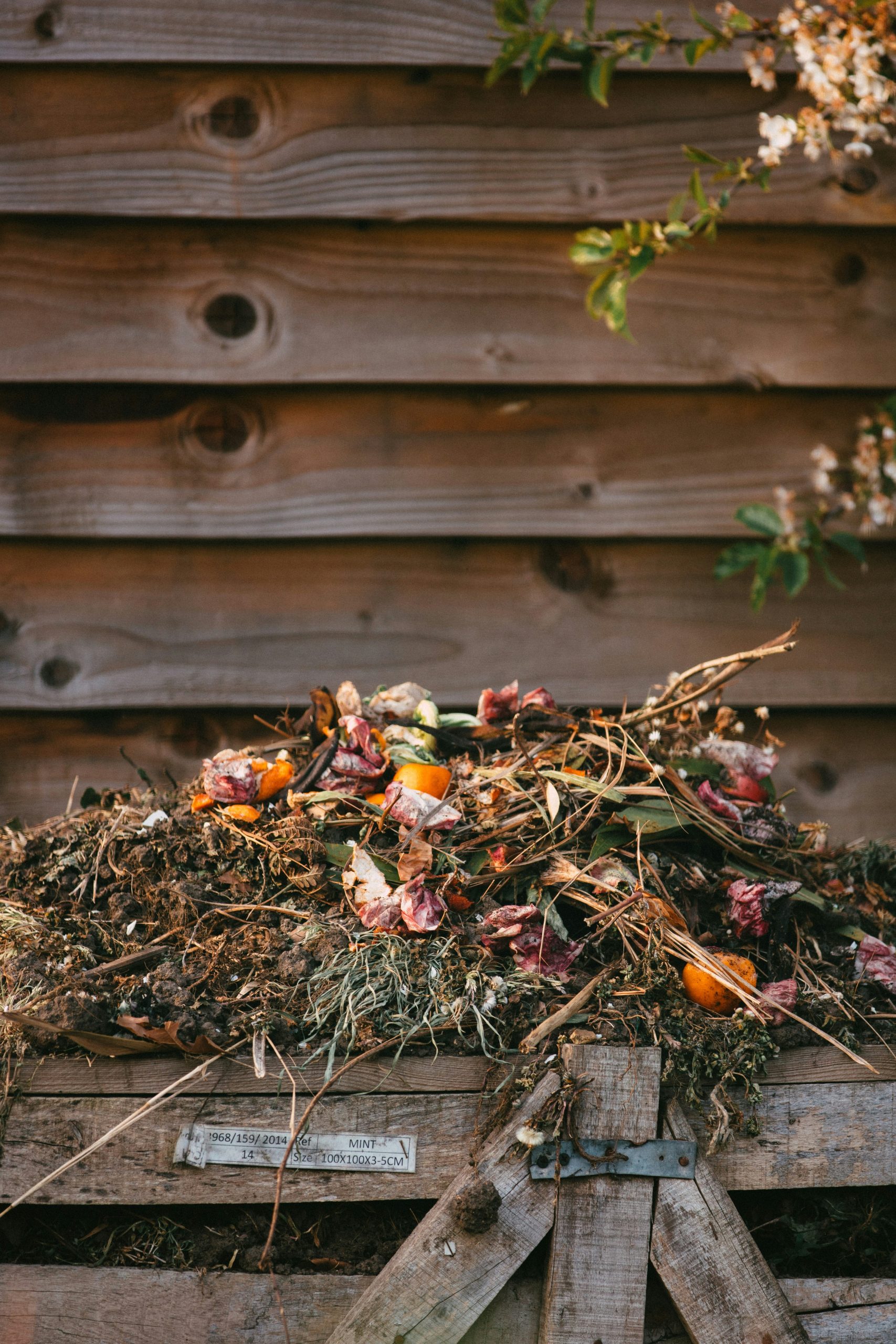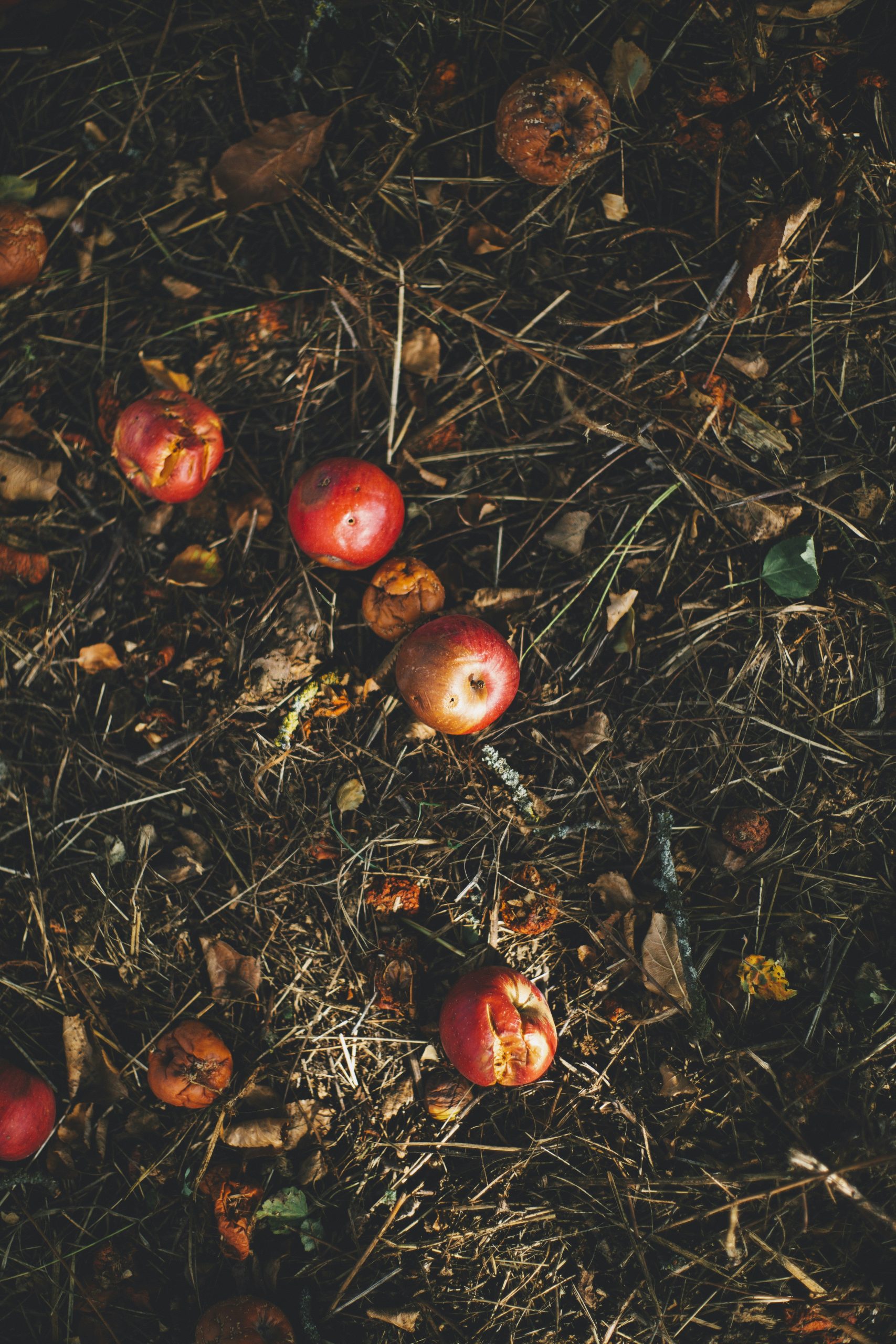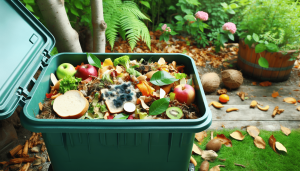In our journey to create rich, fertile compost, we’ve come across the essential task of maintaining the perfect moisture level. It’s a bit like tending to a garden; with the right balance, our organic materials break down efficiently into nutrient-rich humus. This article will guide us through simple, effective methods to keep our compost pile moist but not waterlogged, ensuring that beneficial microbes thrive and accelerate the decomposition process. So, let’s delve into the practical steps we can take to nurture our compost pile and reap the benefits of our efforts. How do we maintain moisture in our compost pile? That’s a question many of us who are diving into the world of composting often find ourselves asking. It’s an important consideration, too, because the right moisture level can make or break our composting efforts. So let’s delve into the nuts and bolts of keeping our compost pile adequately moist and share some practical tips that will keep our compost thriving.

Why Moisture is Crucial for Compost
Maintaining moisture is fundamental for compost health. Without the right amount of moisture, the microorganisms that break down the organic materials in our compost can’t perform at their best. This balance is crucial for achieving decomposition efficiently.
The Role of Microorganisms
Microorganisms, such as bacteria and fungi, are the unsung heroes of composting. They need moisture to thrive and break down organic matter into nutrient-rich compost. If our compost pile is too dry, these organisms go dormant, and if it’s too wet, the excess water can suffocate them.
Optimal Moisture Level
The ideal moisture content for a compost pile is comparable to a wrung-out sponge—damp but not dripping. A compost pile with proper moisture should maintain a balance between aerobic and anaerobic conditions. Aerobic microorganisms need air, while some anaerobic microorganisms can tolerate less oxygen.
Assessing Moisture in Your Compost
Before we can manage the moisture in our compost pile, we need to know how to diagnose its current state. Assessing moisture levels accurately sets the foundation for making necessary adjustments.
The Squeeze Test
One simple and effective way to measure compost moisture is to use the squeeze test. Grab a handful of compost material and give it a good squeeze. Here’s what we should look for:
| Condition | What to Look For |
|---|---|
| Too Dry | The material feels dusty, crumbles easily, and no water drips. |
| Just Right | The material holds together, feels like a damp sponge, and only a few drops might squeeze out. |
| Too Wet | The material feels soggy, water drips out easily, and it might emit a foul odor. |
Using a Moisture Meter
For those of us who prefer a more scientific approach, a compost moisture meter is a helpful tool. These devices give us a quick reading of moisture content, often expressed as a percentage, ensuring we’re hitting that optimal dampness level of around 40-60%.
Adjusting Moisture Levels: Practical Tips
Once we’ve assessed our compost’s moisture, the next step is making necessary adjustments. Here are some practical tips to help us maintain an ideal moisture level in our compost pile.
Adding Water to a Dry Compost Pile
If our compost pile is too dry, we need to add moisture to get things moving again. Here are a few methods to consider:
Sprinkling Water
We can use a garden hose to gently sprinkle water over the compost pile. It’s best to use a fine spray setting to avoid drenching any one spot. Consistent, light watering over several days can be more effective than a single soaking.
Layering Wet Ingredients
Adding layers of wet ingredients like kitchen scraps or freshly cut grass can help boost moisture levels. Spreading these materials evenly throughout the pile ensures that moisture is distributed effectively.
Incorporating Soaked Materials
If we have materials like straw, shredded paper, or cardboard, soaking them in water before adding them to the pile can help introduce moisture. This is particularly effective when added in layers throughout the compost pile.
Drying Out a Wet Compost Pile
On the flip side, if our compost pile is too wet, we need to take steps to balance moisture levels back to optimal conditions. Here are a few strategies:
Turning the Compost
By regularly turning our compost pile, we can help aerate it and dry out excessive moisture. Turning the pile exposes wetter materials to air, helping to speed up drying.
Adding Dry Materials
Dry, carbon-rich materials, known as browns, can help absorb excess moisture. Examples include dried leaves, straw, wood chips, or shredded newspaper. Mixing these into the compost pile can help create a better moisture balance.
| Brown Materials | Benefits |
|---|---|
| Dried Leaves | Easily available, good absorbent |
| Straw | Adds structure, helps with aeration |
| Wood Chips | Long-lasting, good for structure |
| Shredded Newspaper/Cardboard | Readily available, decomposes well |
Covering the Pile
Covering the compost pile with a tarp or compost cover can help regulate moisture levels. In rainy weather, it can prevent the pile from becoming too wet, while in dry conditions, it helps retain moisture.
Fine-Tuning Moisture Control
Maintaining moisture is not a one-time task; it requires ongoing attention and adjustments. Let’s explore some advanced techniques for fine-tuning moisture control in our compost pile.
Aeration and Drainage
Proper aeration and drainage are key to maintaining optimal moisture levels. Without good airflow, our compost pile can become soggy and develop unpleasant odors. Here are some methods to improve aeration and drainage:
Creating Air Pockets
We can create air pockets in the compost pile by using bulky materials like twigs and branches. Layering these materials at the bottom or periodically throughout the pile enhances airflow.
Using a Compost Aerator
A compost aerator is a handy tool designed to help us turn and mix the compost pile more efficiently. These tools help introduce air into the pile, aiding in moisture regulation.
Managing Pile Size and Location
The size and location of our compost pile can also influence moisture levels. A larger pile retains moisture better than a smaller one, while the location can impact exposure to rain and sun.
Ideal Size
A compost pile that’s at least three cubic feet (3’x3’x3’) generally maintains moisture more effectively. Larger piles resist drying out, and their internal heat helps with decomposition.
Strategic Placement
Placing the compost pile in a spot with partial shade can help balance moisture levels. Full sun can dry out the pile too quickly, while complete shade can retain too much moisture.
Monitoring Weather Conditions
Weather plays a significant role in compost moisture management. We should adjust our strategies according to the weather conditions in our region:
Rainy Weather
During periods of heavy rain, covering the compost pile helps prevent it from becoming waterlogged. It’s also an excellent time to add more dry, absorbent materials.
Dry Weather
In dry, hot weather, it might be necessary to water our compost pile more frequently. Regular monitoring and watering ensure that the pile doesn’t dry out completely.

Troubleshooting Common Issues
Despite our best efforts, sometimes our compost pile might encounter problems. Let’s discuss some common issues and how we can troubleshoot them to maintain the right moisture balance.
Compost Pile is Not Heating Up
If our compost pile isn’t heating up, it could be too dry. Moisture is necessary for microbial activity that generates heat. We should check and adjust the moisture levels using the tips mentioned earlier.
Foul Odors
A smelly compost pile could indicate excess water or poor aeration. Turning the pile, adding dry materials, and ensuring proper airflow can help mitigate odors.
Slow Decomposition
If our compost pile is decomposing slowly, dry conditions might be the culprit. Adding water and wet materials can jumpstart the process, making sure it’s not too wet nor too dry.
Sustainable Practices for Moisture Maintenance
Maintaining compost moisture isn’t just about convenience; it’s also about practicing environmental sustainability. Here are a few sustainable practices we can incorporate:
Collecting Rainwater
Collecting rainwater for our compost pile can be an eco-friendly way to maintain moisture. Rain barrels or simple collection systems can store water for dry periods, reducing our reliance on tap water.
Mulching
Mulching our compost pile with straw, leaves, or grass clippings can help retain moisture. These materials act as a protective layer, keeping internal moisture levels steady while promoting aeration.
Seasonal Adjustments
Adapting our composting practices to the changing seasons ensures that moisture levels remain consistent throughout the year. We can adjust the balance of green (nitrogen-rich) and brown (carbon-rich) materials based on the prevailing weather conditions.

Conclusion
Balancing moisture in our compost pile is both an art and a science. By understanding the role of moisture, accurately assessing it, and making informed adjustments, we can create a thriving composting environment. From using simple methods like the squeeze test to employing advanced techniques like strategic placement and seasonal adjustments, maintaining the right moisture level is attainable and rewarding.
Remember, a well-maintained compost pile not only benefits our garden with rich, fertile humus but also contributes to a healthier environment by recycling organic waste. So let’s keep our compost pile in optimal condition and watch our garden flourish! Happy composting!



